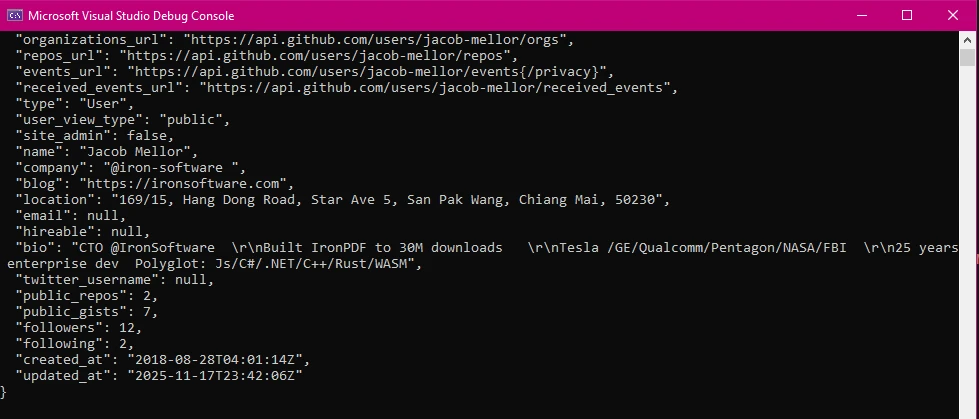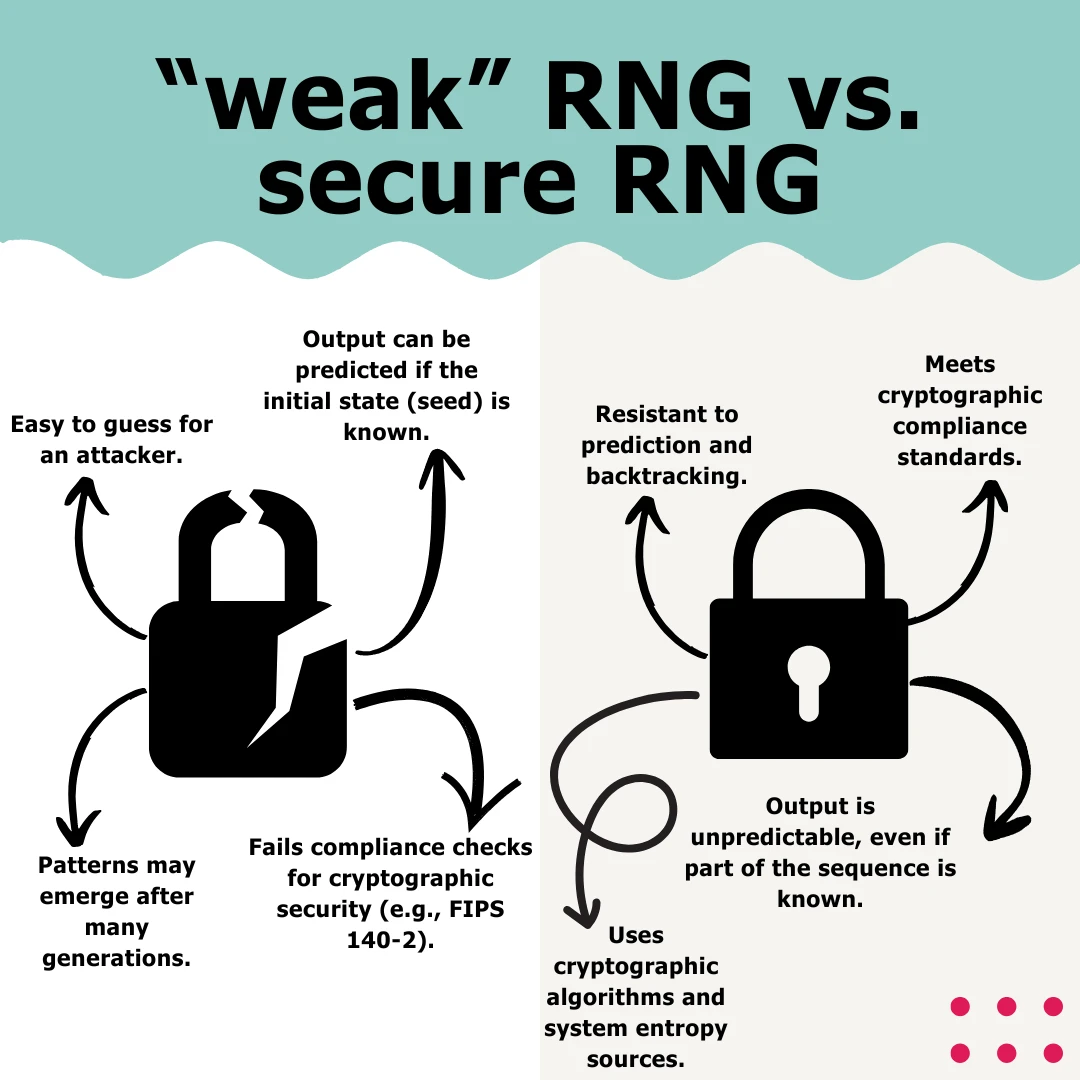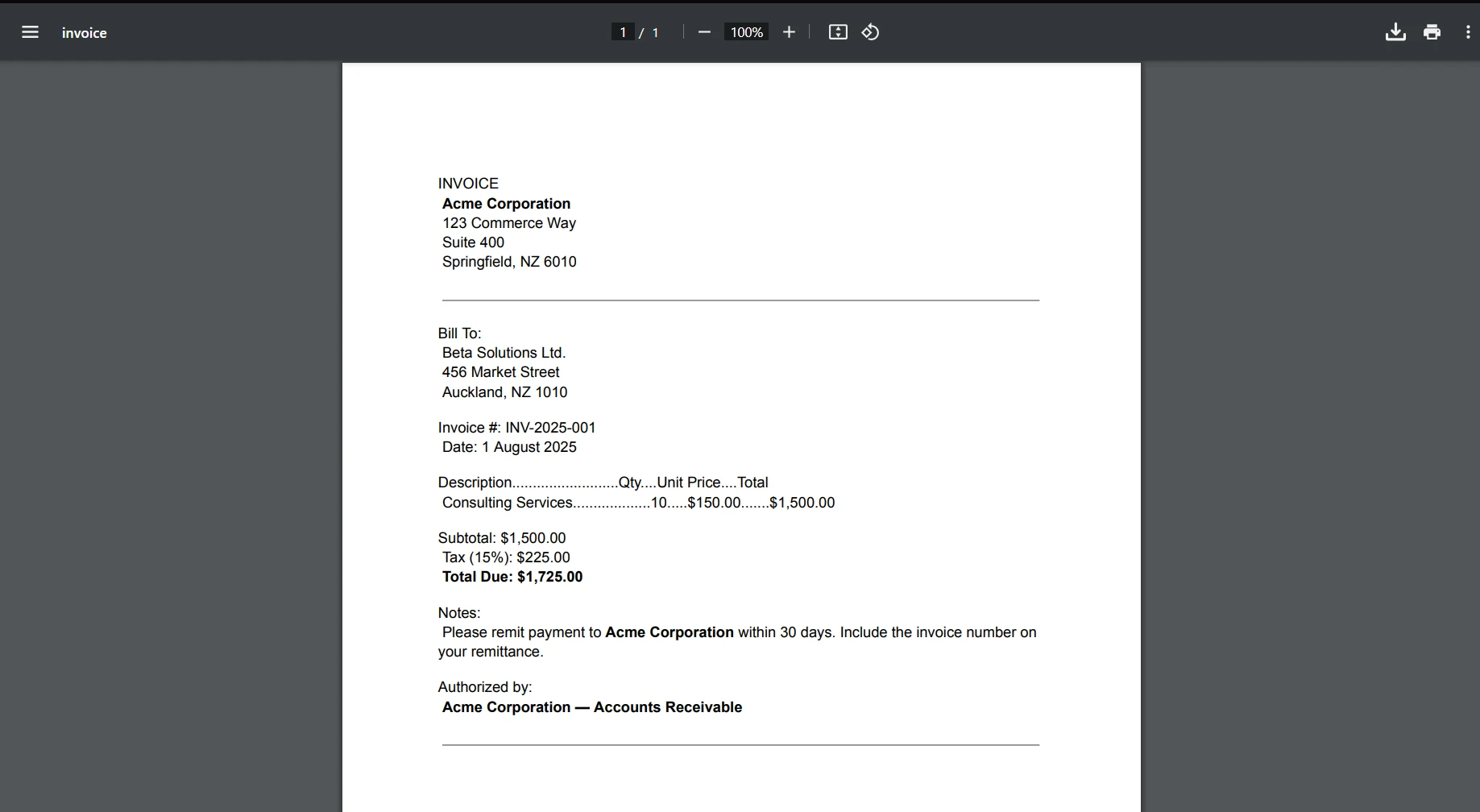C# Yield Return (How It Works For Developers)
C# is one of the most popular programming languages developed by Microsoft, which provides features that add elegance and efficiency to your code. One such feature is the yield keyword, which was first introduced in C# 2.0. Microsoft provides a complete language reference on yield keyword statements to explore more on using them in iterator methods, which you can view in the official Microsoft documentation on yield.
In this article, we'll look into yield return in C#, exploring its functionality, use cases, and how it can transform the way you approach iteration.
Understanding the Basics: Iteration in C#
Iteration is a fundamental concept in programming, and C# offers various mechanisms to achieve it. Traditionally, loops like the for and the foreach loop have been the go-to tools for iterating over collections. However, C# introduces a more elegant solution with the yield keyword applied to the return statement, and through the use of the IEnumerable interface.
The Efficiency of the yield return Statement
At its core, yield return is a statement used in the iterator method to provide a more efficient way of generating a sequence of values. It allows you to create an iterator without the need to generate an entire collection in memory, making it particularly useful for large datasets or infinite sequences.
Here's a simple code snippet to illustrate the basic usage of yield return:
using System;
using System.Collections.Generic;
public class Example
{
// Method that generates numbers from start to end using 'yield return'
public IEnumerable<int> GenerateNumbers(int start, int end)
{
// Loop from 'start' to 'end'
for (int i = start; i <= end; i++)
{
yield return i; // Returns each number in the sequence without breaking the loop
}
}
public static void Main()
{
// Usage: Using 'foreach' to iterate over numbers generated by 'GenerateNumbers'
foreach (var number in new Example().GenerateNumbers(1, 5))
{
Console.WriteLine(number); // Outputs numbers 1 - 5
}
}
}using System;
using System.Collections.Generic;
public class Example
{
// Method that generates numbers from start to end using 'yield return'
public IEnumerable<int> GenerateNumbers(int start, int end)
{
// Loop from 'start' to 'end'
for (int i = start; i <= end; i++)
{
yield return i; // Returns each number in the sequence without breaking the loop
}
}
public static void Main()
{
// Usage: Using 'foreach' to iterate over numbers generated by 'GenerateNumbers'
foreach (var number in new Example().GenerateNumbers(1, 5))
{
Console.WriteLine(number); // Outputs numbers 1 - 5
}
}
}Imports System
Imports System.Collections.Generic
Public Class Example
' Method that generates numbers from start to end using 'yield return'
Public Iterator Function GenerateNumbers(ByVal start As Integer, ByVal [end] As Integer) As IEnumerable(Of Integer)
' Loop from 'start' to 'end'
For i As Integer = start To [end]
Yield i ' Returns each number in the sequence without breaking the loop
Next i
End Function
Public Shared Sub Main()
' Usage: Using 'foreach' to iterate over numbers generated by 'GenerateNumbers'
For Each number In (New Example()).GenerateNumbers(1, 5)
Console.WriteLine(number) ' Outputs numbers 1 - 5
Next number
End Sub
End ClassIn this example, the GenerateNumbers method uses yield return to produce a sequence of numbers from start to end. The iterator is lazily evaluated, meaning each number is generated on demand during the execution of the iteration.
Lazy Evaluation and Efficiency
One of the significant advantages of the yield return statement is its ability to support lazy evaluation. Unlike traditional methods that generate an entire collection before iteration, yield return produces values one at a time. This can lead to significant memory savings, especially when dealing with large datasets.
Stateful Iteration: Handling Complex Scenarios
The yield return statement is not just limited to generating simple sequences; it excels in handling more complex scenarios in the iterator block. By maintaining a state machine across iterations, you can create iterators that remember their position in the sequence.
using System;
using System.Collections.Generic;
public class FibonacciExample
{
// Method that generates Fibonacci numbers up to the specified count
public IEnumerable<string> GenerateFibonacci(int count)
{
int a = 0, b = 1;
for (int i = 0; i < count; i++)
{
yield return a.ToString(); // Returns the Fibonacci number as a string
int temp = a;
a = b;
b = temp + b;
}
}
public static void Main()
{
// Usage: Iterating over Fibonacci numbers generated by 'GenerateFibonacci'
foreach (var fibNumber in new FibonacciExample().GenerateFibonacci(8))
{
Console.WriteLine(fibNumber); // Outputs a Fibonacci number sequence
}
}
}using System;
using System.Collections.Generic;
public class FibonacciExample
{
// Method that generates Fibonacci numbers up to the specified count
public IEnumerable<string> GenerateFibonacci(int count)
{
int a = 0, b = 1;
for (int i = 0; i < count; i++)
{
yield return a.ToString(); // Returns the Fibonacci number as a string
int temp = a;
a = b;
b = temp + b;
}
}
public static void Main()
{
// Usage: Iterating over Fibonacci numbers generated by 'GenerateFibonacci'
foreach (var fibNumber in new FibonacciExample().GenerateFibonacci(8))
{
Console.WriteLine(fibNumber); // Outputs a Fibonacci number sequence
}
}
}Imports System
Imports System.Collections.Generic
Public Class FibonacciExample
' Method that generates Fibonacci numbers up to the specified count
Public Iterator Function GenerateFibonacci(ByVal count As Integer) As IEnumerable(Of String)
Dim a As Integer = 0, b As Integer = 1
For i As Integer = 0 To count - 1
Yield a.ToString() ' Returns the Fibonacci number as a string
Dim temp As Integer = a
a = b
b = temp + b
Next i
End Function
Public Shared Sub Main()
' Usage: Iterating over Fibonacci numbers generated by 'GenerateFibonacci'
For Each fibNumber In (New FibonacciExample()).GenerateFibonacci(8)
Console.WriteLine(fibNumber) ' Outputs a Fibonacci number sequence
Next fibNumber
End Sub
End ClassIn this example, the GenerateFibonacci method uses yield return to create a Fibonacci number sequence. The state is maintained between iterations, ensuring efficient generation and output of Fibonacci numbers.
Building Infinite Sequences
One intriguing application of yield return is its ability to create infinite sequences of values. Since values are generated on the fly, you can represent sequences that go on forever without consuming infinite memory.
using System;
using System.Collections.Generic;
public class InfiniteSequenceExample
{
// Method that generates an infinite sequence of even numbers
public IEnumerable<int> GenerateEvenNumbers()
{
int num = 0;
while (true)
{
yield return num;
num += 2;
}
}
public static void Main()
{
// Usage: Generating even numbers using the 'GenerateEvenNumbers' method
var evenNumberIterator = new InfiniteSequenceExample().GenerateEvenNumbers().GetEnumerator();
for (int i = 0; i < 5; i++)
{
evenNumberIterator.MoveNext();
Console.WriteLine(evenNumberIterator.Current); // Outputs the first 5 even numbers
}
}
}using System;
using System.Collections.Generic;
public class InfiniteSequenceExample
{
// Method that generates an infinite sequence of even numbers
public IEnumerable<int> GenerateEvenNumbers()
{
int num = 0;
while (true)
{
yield return num;
num += 2;
}
}
public static void Main()
{
// Usage: Generating even numbers using the 'GenerateEvenNumbers' method
var evenNumberIterator = new InfiniteSequenceExample().GenerateEvenNumbers().GetEnumerator();
for (int i = 0; i < 5; i++)
{
evenNumberIterator.MoveNext();
Console.WriteLine(evenNumberIterator.Current); // Outputs the first 5 even numbers
}
}
}Imports System
Imports System.Collections.Generic
Public Class InfiniteSequenceExample
' Method that generates an infinite sequence of even numbers
Public Iterator Function GenerateEvenNumbers() As IEnumerable(Of Integer)
Dim num As Integer = 0
Do
Yield num
num += 2
Loop
End Function
Public Shared Sub Main()
' Usage: Generating even numbers using the 'GenerateEvenNumbers' method
Dim evenNumberIterator = (New InfiniteSequenceExample()).GenerateEvenNumbers().GetEnumerator()
For i As Integer = 0 To 4
evenNumberIterator.MoveNext()
Console.WriteLine(evenNumberIterator.Current) ' Outputs the first 5 even numbers
Next i
End Sub
End ClassIn this example, the GenerateEvenNumbers method creates an iterator for even numbers, and you can iterate over it as needed. You can also use the yield break statement along with yield return to stop and exit the loop, making a custom iteration for the loop.
Introducing IronPDF: A Powerhouse C# Library
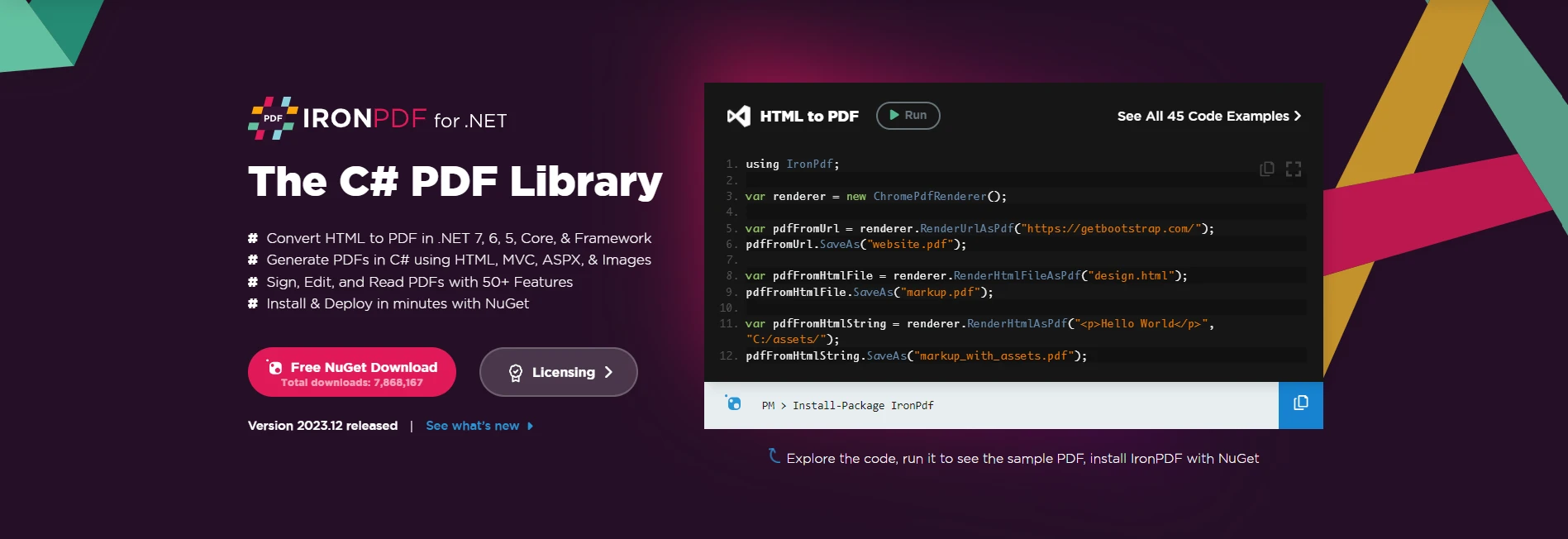
IronPDF stands out as a versatile C# library designed to simplify the complexities of working with PDFs. Whether you're generating invoices, reports, or any other document, IronPDF empowers you to seamlessly convert HTML content into polished and professional PDFs directly within your C# application.
Installing IronPDF: A Quick Start
To incorporate IronPDF into your C# project, you can swiftly install the IronPDF NuGet package. Execute the following command in your Package Manager Console:
Install-Package IronPdf
Alternatively, you can locate "IronPDF" in the NuGet Package Manager and install it from there.
Generating PDFs with IronPDF
Creating a PDF using IronPDF is a straightforward process. Let's consider a basic example:
using IronPdf;
public class PdfGenerationExample
{
public static void Main()
{
var htmlContent = "<html><body><h1>Hello, IronPDF!</h1></body></html>";
// Create a new PDF renderer instance
var pdfRenderer = new ChromePdfRenderer();
// Render the HTML content as a PDF and save it to a file
pdfRenderer.RenderHtmlAsPdf(htmlContent).SaveAs("C:/GeneratedDocument.pdf");
}
}using IronPdf;
public class PdfGenerationExample
{
public static void Main()
{
var htmlContent = "<html><body><h1>Hello, IronPDF!</h1></body></html>";
// Create a new PDF renderer instance
var pdfRenderer = new ChromePdfRenderer();
// Render the HTML content as a PDF and save it to a file
pdfRenderer.RenderHtmlAsPdf(htmlContent).SaveAs("C:/GeneratedDocument.pdf");
}
}Imports IronPdf
Public Class PdfGenerationExample
Public Shared Sub Main()
Dim htmlContent = "<html><body><h1>Hello, IronPDF!</h1></body></html>"
' Create a new PDF renderer instance
Dim pdfRenderer = New ChromePdfRenderer()
' Render the HTML content as a PDF and save it to a file
pdfRenderer.RenderHtmlAsPdf(htmlContent).SaveAs("C:/GeneratedDocument.pdf")
End Sub
End ClassIn the above example, IronPDF is used to render HTML content into a PDF document, which is then saved to the specified location. For more detailed information, please visit the IronPDF documentation.
The Intersection of yield return and IronPDF
Now, let's explore whether the yield return statement, a powerful tool for lazy evaluation and efficient iteration, can seamlessly integrate with IronPDF.
Consider a scenario where you need to generate a PDF document with a list of items using yield return. You can leverage the benefits of yield statements to dynamically generate content and then employ IronPDF to transform that content into a PDF. The following code snippet generates a PDF document with the help of a yield statement to add dynamic control over PDF content:
using System;
using System.Collections.Generic;
using System.Linq;
using IronPdf;
class Program
{
// Method that dynamically generates content using 'yield return'
public static IEnumerable<string> GenerateDynamicContent()
{
yield return "Item 1";
yield return "Item 2";
yield return "Item 3";
}
public static void Main(string[] args)
{
// Generate dynamic content using the 'GenerateDynamicContent' function
var dynamicContent = GenerateDynamicContent();
// Create HTML structure for the PDF document with dynamic content
var dynamicPdfContent = $@"
<html>
<body>
<h1>List of Items</h1>
<ul>
{string.Join("", dynamicContent.Select(item => $"<li>{item}</li>"))}
</ul>
</body>
</html>
";
// Create a new PDF document with dynamically generated content
var dynamicPdfRenderer = new ChromePdfRenderer();
dynamicPdfRenderer.RenderHtmlAsPdf(dynamicPdfContent).SaveAs("C:/DynamicItems.pdf");
}
}using System;
using System.Collections.Generic;
using System.Linq;
using IronPdf;
class Program
{
// Method that dynamically generates content using 'yield return'
public static IEnumerable<string> GenerateDynamicContent()
{
yield return "Item 1";
yield return "Item 2";
yield return "Item 3";
}
public static void Main(string[] args)
{
// Generate dynamic content using the 'GenerateDynamicContent' function
var dynamicContent = GenerateDynamicContent();
// Create HTML structure for the PDF document with dynamic content
var dynamicPdfContent = $@"
<html>
<body>
<h1>List of Items</h1>
<ul>
{string.Join("", dynamicContent.Select(item => $"<li>{item}</li>"))}
</ul>
</body>
</html>
";
// Create a new PDF document with dynamically generated content
var dynamicPdfRenderer = new ChromePdfRenderer();
dynamicPdfRenderer.RenderHtmlAsPdf(dynamicPdfContent).SaveAs("C:/DynamicItems.pdf");
}
}Imports System
Imports System.Collections.Generic
Imports System.Linq
Imports IronPdf
Friend Class Program
' Method that dynamically generates content using 'yield return'
Public Shared Iterator Function GenerateDynamicContent() As IEnumerable(Of String)
Yield "Item 1"
Yield "Item 2"
Yield "Item 3"
End Function
Public Shared Sub Main(ByVal args() As String)
' Generate dynamic content using the 'GenerateDynamicContent' function
Dim dynamicContent = GenerateDynamicContent()
' Create HTML structure for the PDF document with dynamic content
, String.Join(TangibleTempVerbatstring.Format(mDoubleQuote, dynamicContent.Select(Function(item) $TangibleTempVerbatimCloseTag"<li>{item}</li>")), TangibleStringInterpolationMarker) var dynamicPdfContent = $"TangibleTempVerbatimOpenTagTangibleTempVerbatimStringLiteralLineJoin <html>TangibleTempVerbatimStringLiteralLineJoin <body>TangibleTempVerbatimStringLiteralLineJoin <h1>List of Items</h1>TangibleTempVerbatimStringLiteralLineJoin <ul>TangibleTempVerbatimStringLiteralLineJoin {0}ignoreignoreignoreignoreignore</ul></body></html>"
' Create a new PDF document with dynamically generated content
Dim dynamicPdfRenderer = New ChromePdfRenderer()
dynamicPdfRenderer.RenderHtmlAsPdf(dynamicPdfContent).SaveAs("C:/DynamicItems.pdf")
End Sub
End ClassIn this example, the GenerateDynamicContent method utilizes yield return to provide a sequence of dynamic items. The generated content is then incorporated into an HTML structure and used by IronPDF to create a PDF document.
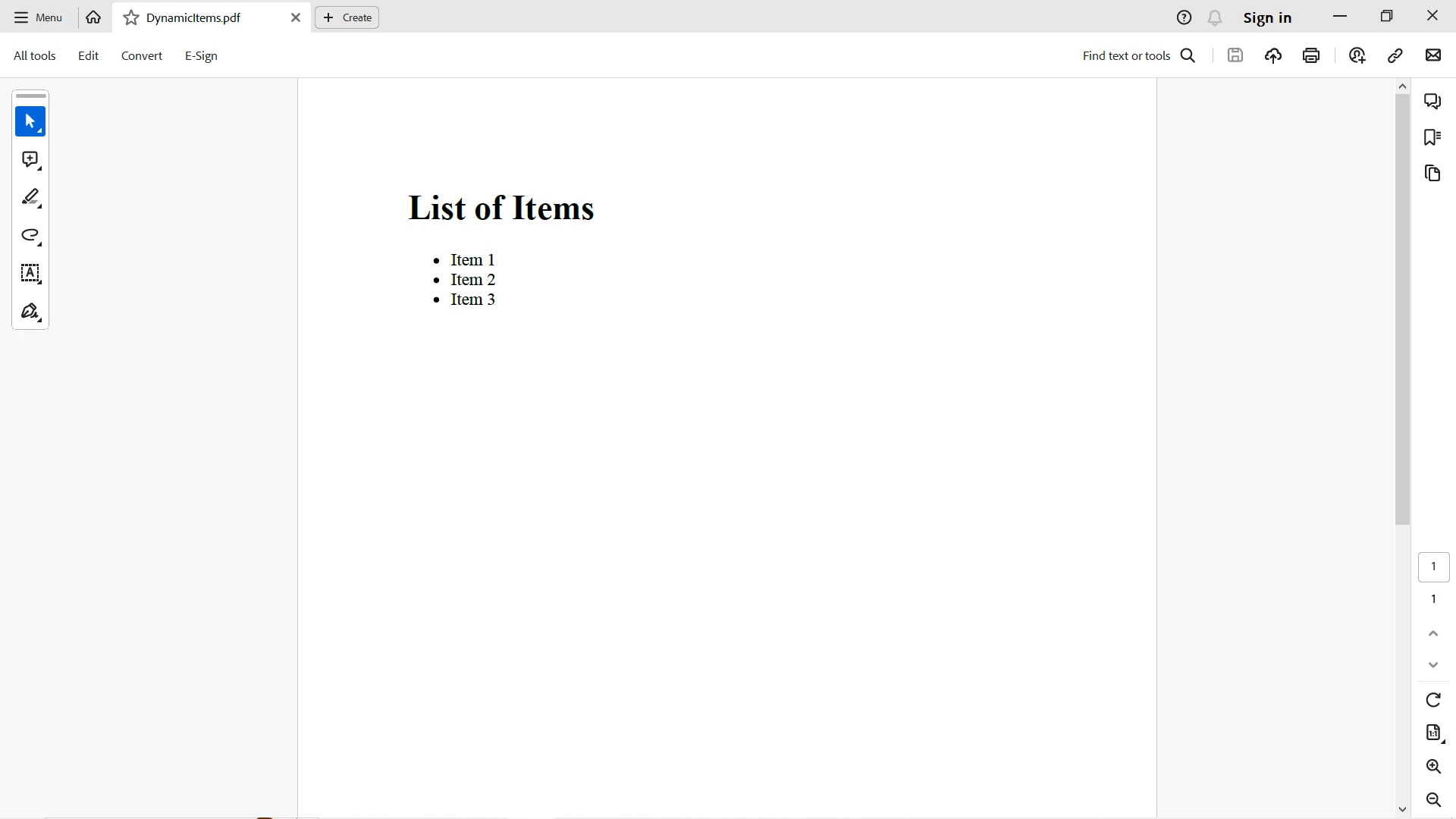
Conclusion
In conclusion, yield return is a powerful and elegant feature in C# that transforms the way you approach iteration. Its ability to support lazy evaluation, handle complex scenarios with stateful iteration, and create infinite sequences makes it a valuable tool in your programming toolkit. Whether you're dealing with large datasets or implementing sophisticated algorithms, yield return empowers you to write more efficient and expressive code.
While yield return facilitates the efficient and on-demand generation of content, IronPDF steps in to seamlessly convert that content into professional PDF documents. Whether you're dynamically creating lists, reports, or any other document, this synergy empowers you to take your C# document generation capabilities to new heights. Embrace the potential of this dynamic duo, and let your PDFs shine with dynamic and efficiently generated content!
IronPDF provides a free trial to test out its complete functionality just like in commercial mode. Learn more about IronPDF licenses starting from $799.
Frequently Asked Questions
How can I use the yield return statement to enhance iteration in C#?
The yield return statement can be utilized in C# to efficiently generate sequences. It allows the creation of iterators that produce values on-demand, which helps save memory by not requiring the storage of an entire collection.
What advantages does yield return offer when working with large datasets?
Yield return offers the advantage of lazy evaluation, which means values are generated only as needed. This reduces memory usage significantly when dealing with large datasets, as the complete sequence does not need to be stored in memory.
Can yield return be used in conjunction with PDF generation in C#?
Yes, yield return can be used to dynamically generate content that can then be converted into PDF format using IronPDF. This approach facilitates efficient and dynamic document generation within C# applications.
How does yield return simplify the creation of infinite sequences in C#?
Yield return simplifies the creation of infinite sequences by generating values on-the-fly. This means that it can continue to produce values indefinitely without exhausting memory, as it only creates each element when it is needed.
What is the benefit of lazy evaluation in the context of C# programming?
In C#, lazy evaluation, facilitated by yield return, allows values to be computed only as required during the iteration process. This leads to more efficient memory usage and can improve performance when handling extensive or complex data sequences.
How can I convert HTML content to PDF using a C# library?
You can convert HTML content to PDF in C# using the IronPDF library. The library's ChromePdfRenderer can render HTML and CSS into professional-grade PDF documents.
What is a practical use case for yield return with IronPDF?
A practical use case is dynamically generating report data with yield return and then converting this data into a PDF using IronPDF. This method is efficient for creating dynamic documents without pre-generating all content in memory.
What are the key benefits of using yield return in C# for developers?
Yield return provides several benefits, including improved memory efficiency through lazy evaluation, the ability to manage complex iteration scenarios, and the potential to generate infinite sequences without memory overflow.
How do I install a C# library for PDF manipulation?
To install a library like IronPDF for PDF manipulation in a C# project, you can use the NuGet package manager with the command: Install-Package IronPDF.


